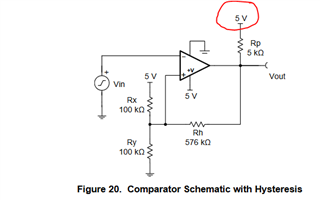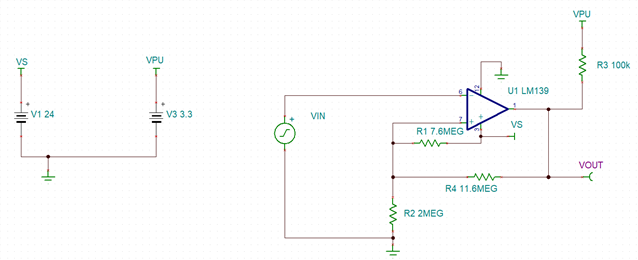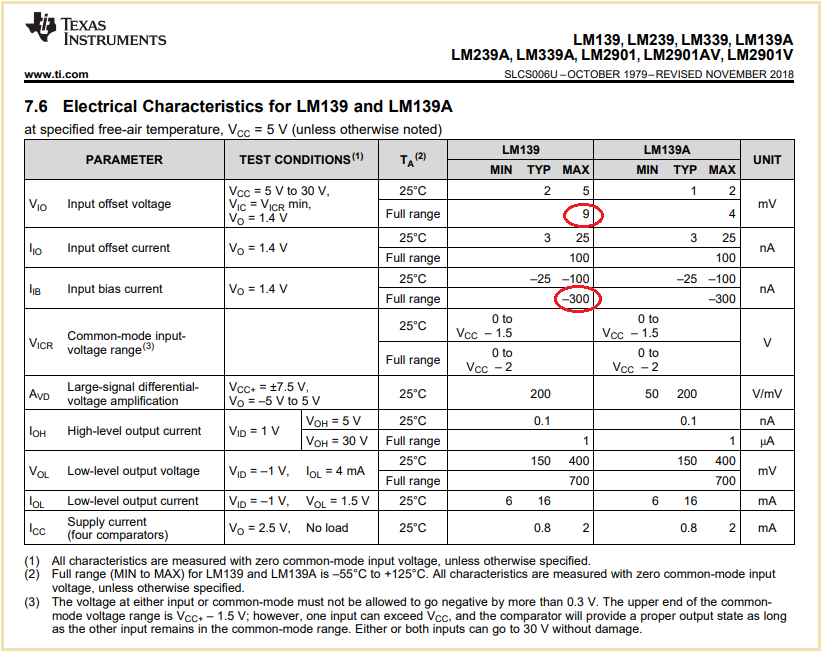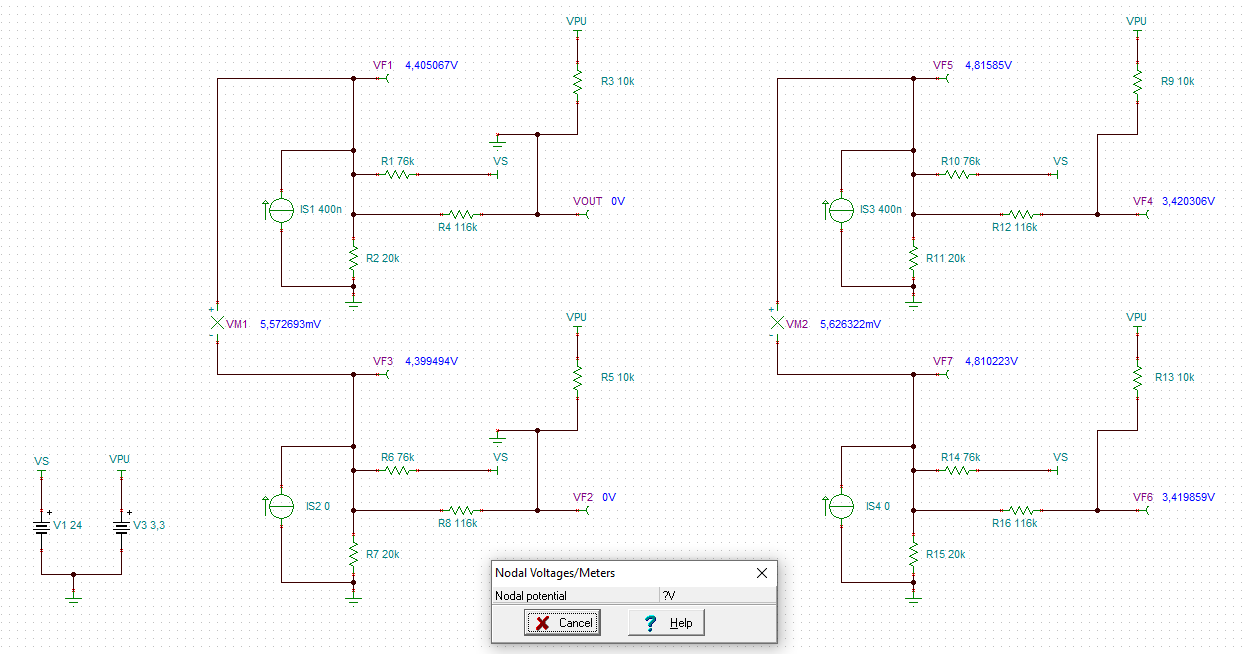Other Parts Discussed in Thread: LM139, LM239

Referring to above image, My supply voltage is different(+24V), I want to make Vout compatible to microcontroller interface(+3v3). can i connect pullup resistor to 3v3, so that i can easily interface with microcontroller ?





